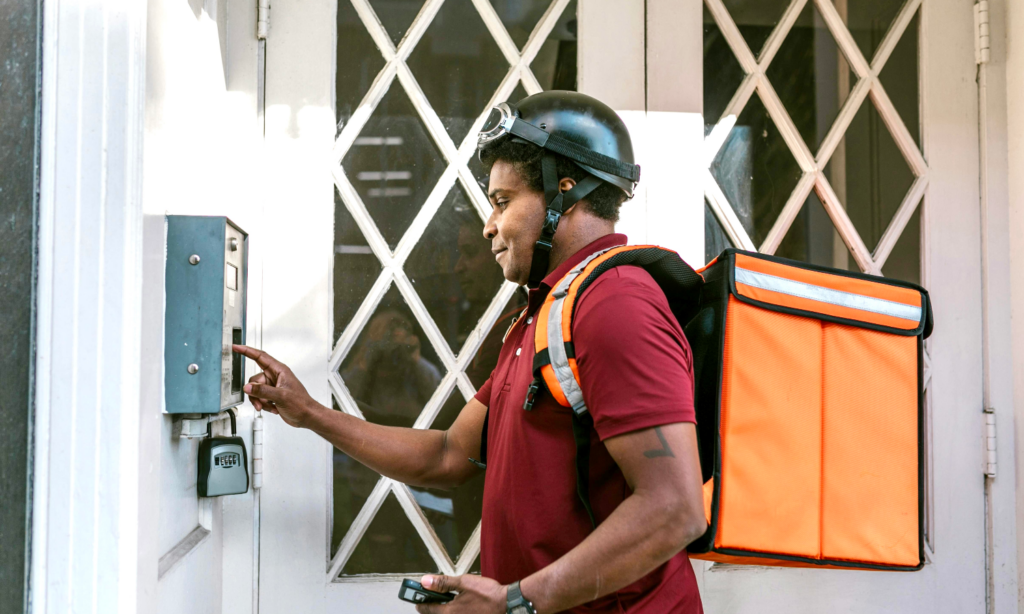How are Uber drivers and other gig workers taxed in Canada?
If you earn money as a gig worker or an independent contractor—even for just a few hours a week—here are 10 things you should know before filing taxes.
Advertisement
If you earn money as a gig worker or an independent contractor—even for just a few hours a week—here are 10 things you should know before filing taxes.

Navigating income taxes in Canada can be challenging at the best of times. But it’s even harder for gig workers because they’re considered to be self-employed, and self-employment makes taxes more complex. If you’re an independent contractor such as a rideshare driver or a food delivery driver, here are some tips to keep in mind for tax season.
Deducting business expenses from self-employment income is both a benefit and a curse. On the one hand, it’s a way to reduce taxes. On the other hand, you have to be careful to not deduct an expense that’s going to get a negative reaction from the Canada Revenue Agency (CRA), which administers federal tax laws and most provincial/territorial tax laws.
For example, avoid deducting clothing or gym memberships, even if you feel they’re essential to your work. And carefully track the context of your meal deductions. For business meetings, write down who you were with and what you discussed. For out-of-town business/work trips, record where you were, why and for how long. Also note that only 50% of eligible meal and entertainment expenses are tax-deductible.
If your work involves using a vehicle—be it a car, van, bicycle or e-bike—that you also use for personal activities, you’ll need to keep track of your mileage for business versus personal purposes.
You can use a paper logbook or an app that tracks your mileage using GPS, which you can turn on at the beginning of your work time and turn off at the end. Use this mileage to calculate the percentage of vehicle use that is business-related, then multiply that percentage by the total cost of operating the vehicle, including fuel, maintenance and repairs. For example, if you put 10,000 kilometres on the vehicle in the year and 7,500 kilometres (75% of the total) were for your business, you can deduct 75% of the vehicle’s operating costs.

If you spend money for work, such as paying for gas, car maintenance, etc., keep the receipts. These are proof of your “business expenses” for tax purposes.
You don’t need a fancy bookkeeping system, just an easily accessible place to drop receipts as you receive them—like a box for paper receipts and a folder on your computer for digital receipts. The key is to keep your method consistent, so you can track tax-deductible expenses and find receipts if the CRA asks to see them.
Receipts and invoices from vendors for your business deductions are called “supporting documents,” and you must keep them for seven years (or six years after you file a given year’s tax return) in case the CRA asks to see them. It’s a good idea to keep the folders for each year together, so you can easily go back up to seven years if the CRA asks for information. Once the tax return has been in the CRA’s hands for six years, you can destroy the supporting documents for that year.
Speaking of seven years, one type of supporting document that will not survive that long is a receipt that fades. You know the ones: they’re printed on that shiny paper, and the print can start to yellow before you even get them out of your pocket and into your storage box. If you’re ever audited, the CRA won’t look kindly on illegible or blank receipts.
Take a picture or make a scan or photocopy of these thermal-paper receipts while they’re still legible, and file the images with your other digital receipts. Once you’ve done that, you can throw out the originals.
Good news: Self-employed Canadians (which includes most gig workers) and their spouses or common-law partners have an “extended” tax filing deadline. That means your income tax return isn’t due April 30 like everyone else’s—you have until June 15 to file. (Note, however, that if you owe tax, interest is calculated from May 1 at the CRA’s prescribed rate.)
Make sure you meet the June 15 filing deadline, even if it turns out you owe more tax than you can pay right now. It’s more important to file on time than to pay on time. Paying late will incur interest, it’s true; but filing late incurs a penalty (a fine) plus the interest. How much is the late-filing penalty? It’s 5% of your 2023 balance owing, plus 1% for each month that you file after the due date, up to 12 months, according to the CRA.
Once your self-employment income reaches $30,000 from all sources within any four consecutive calendar quarters, you have to register for a GST/HST number and start collecting and remitting tax alongside your self-employment income from that point forward. (GST stands for the Goods and Services Tax, which is a sales tax charged by the federal government. Some provinces also have a provincial sales tax, and some combine their provincial tax with the federal tax and call it the Harmonized Sales Tax, or HST.)
That $30,000 threshold is gross income (the total amount paid to you in fees, revenue and commissions), not net income (what’s left over after your expenses are subtracted), and it includes all self-employment but not other sources of income (say, a salaried job, spousal support or government credits). Register when the time comes—or even before you reach $30,000—because if the CRA notices that you should have registered but didn’t, you may have to pay all the GST/HST you haven’t collected, out of your own pocket.
Unlike salaried workers, gig workers don’t have taxes withheld from a paycheque. That may seem like a good thing—more money in your pocket!—but in fact it’s another thing to be wary of, because you might not have enough funds available at tax time. Make sure you’re setting aside some of your income for tax, preferably at the time you earn it.
Typically, setting aside 15% to 25% of the income you earn from driving or other gig work will be enough. Don’t touch it until tax time. The more you save, the safer you’ll be, but it’s not necessary to go above 25%.
Note: If you’re registered to collect GST/HST, set aside the GST/HST you collect first, then set aside 15% to 25% of the rest for income tax.
No one wants to receive letters from the CRA. But don’t let that prevent you from opening, reading and responding to those letters. For one thing, they don’t necessarily mean you owe money—the most common kind of CRA letter is one requesting clarification or a receipt. (And if you followed tips 3, 4 and 5 above, you can find it easily!)
For another thing, not responding to the CRA will, at best, cause you to lose a tax credit (and perhaps owe money as a result) or, at worst, prompt the agency to raise the stakes by freezing your accounts or withholding refunds you’re entitled to. The worst possible course is inaction.
Know the difference between a legitimate contact from the CRA and a scammer trying to scare you. Some telltale signs of a scammer include: an angry, threatening or bullying tone; demands for immediate payment; or demands for payment in currency other than Canadian dollars. A caller from the CRA will not ask you for your social insurance number (though you need to provide it if you call them for information specific to your account). If you’re suspicious, ask the person what department they’re calling from, hang up and call that department yourself using a number from the CRA website.
Scammers may also try to contact you via email. No email from the CRA will contain specifics such as dollar amounts for your CRA account or tax refund, nor will they contain a link. Legitimate information about your account is never sent out by email. It is only available inside the CRA’s online system, My Account (or My Business Account, if you have a business number).
Now that you know how to get ready to file your taxes—how do you actually do it? Most people file their tax return online using tax preparation software. If you’d rather not file your own return, or you have questions about deductions, credits or other tax topics, you can hire a tax preparer to help you. Don’t wait until the last minute to file your taxes or get someone to do it for you.
If you’re new to Canada and this is your first time filing an income tax return, visit the CRA’s website to read tax tips in 13 languages: English, French, Arabic, traditional Chinese, simplified Chinese, Farsi, Hindi, Punjabi, Russian, Spanish, Tagalog, Ukrainian and Urdu.
Share this article Share on Facebook Share on Twitter Share on Linkedin Share on Reddit Share on Email